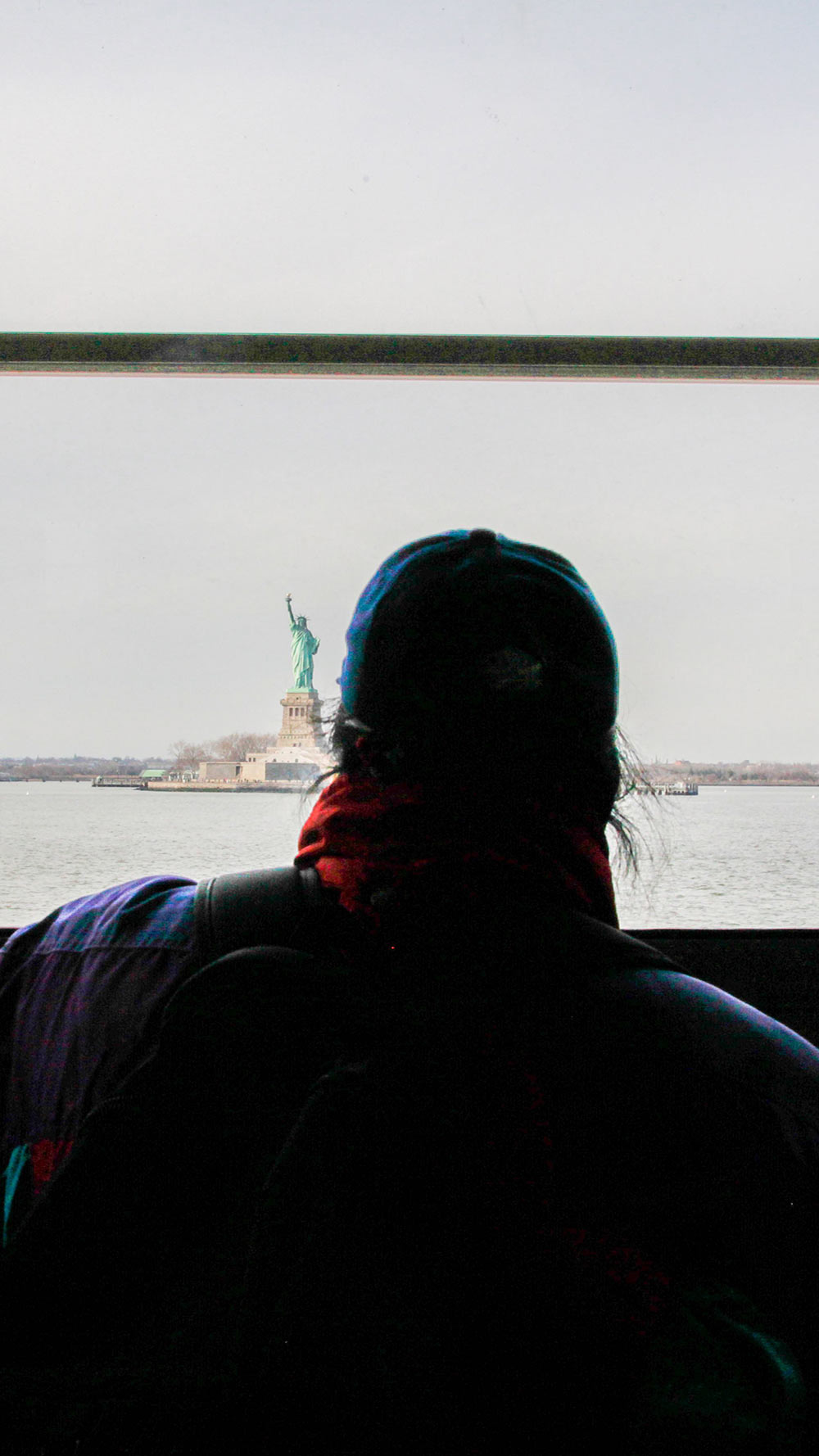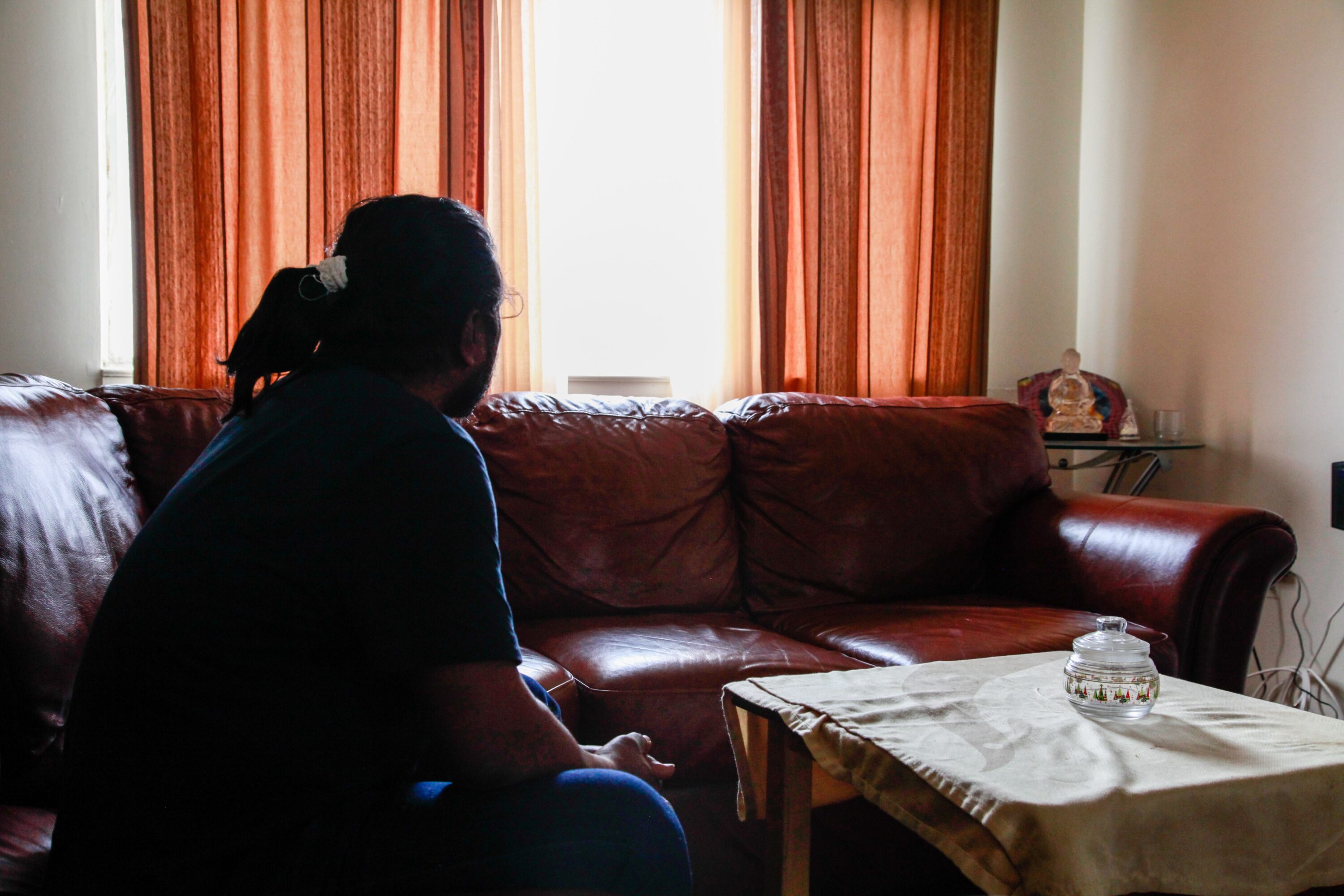From Being Tortured in Sri Lanka to the U.S. Supreme Court


On a frigid day in early February, Vijayakumar Thuraissigiam stands under an awning on a street corner in lower Manhattan along with one of his attorneys, Celso Perez of the âü¯áû颈§Ý§Ã¿«. Both are bundled in heavy winter jackets. Perez is holding his phone up and squinting as he concentrates on the tinny voice of a translator emanating from its speaker.ãI want them to be aware that youãre traveling,ã Perez says into the phone. The voice on the other line translates what Perez said into Tamil, the native language of Sri Lankaãs largest ethnic minority. Thuraissigiam, heavyset in his late 40s with a short black ponytail hidden under his wool cap, looks at Perez and nods. Behind them stands the imposing faûÏade of the Jacob Javits Federal building ã a 42-story tower that houses the New York headquarters of Immigration and Customs Enforcement.Thuraissigiam is there for one of the regular check-ins with ICE that he must attend in order to comply with the terms of his release from immigration detention. Perez wants to make sure that ICE knows he is planning to head to Washington D.C. in a few weeks so he wonãt be flagged when his ankle monitor notifies the agency that heãs left New York.It will not be a mundane trip. Thuraissigiam is the plaintiff in a landmark immigration case being argued by the âü¯áû颈§Ý§Ã¿« in front of the U.S. Supreme Court on March 2nd, over three years after he fled Sri Lanka. The courtãs ruling will have expansive implications not just for him, but for countless other asylum seekers as well.The case is complicated, but important. At stake is whether federal courts have authority to review deportation orders that come through a fast-track process called ãexpedited removal.ã If the Supreme Court rules they do not have such authority, it will mean that ICE and CBP will have virtually carte blanche ability to send Thuraissigiam and asylum seekers like him back to the countries they fled with no federal judicial oversight, in a process that can take only a few days.Thuraissigiamãs path to the Supreme Court began in 2014, in the aftermath of a brutal civil conflict in Sri Lanka. Before a decisive military victory by the government ended the conflict in 2009, , mostly in the Tamil-dominated northeastern part of the country.In 2013, Thuraissigiam worked on a local Tamil politicianãs election campaign. A few months later, men who said they were intelligence officers working with the government visited his farm. They threw him into the back of a white van, gagged him, and drove 40 minutes away to a house where they tortured him by dunking him into a well. While beating him, the men repeatedly asked about his support for the politician.Thuraissigiam lost consciousness. When he woke up he was in a hospital bed. After recovering he went into hiding, and in 2016 he decided to flee to the United States.For eight months, he traveled through South and Central America, at one stage walking through the , a perilous stretch of remote jungle that separates Colombia and Panama. Eventually, he crossed into the U.S. near Tijuana, where he asked Customs and Border Protection officers for asylum.The process of trying to win asylum in the U.S. typically begins with whatãs called a ãcredible fear interview.ã In this interview, immigration officers determine whether a person is eligible for protection. It was intentionally designed by Congress to have a low threshold for success ã if the officer finds that the person has just a ãã of winning their asylum claim, theyãre placed into the next stage of the process. The reason for that low threshold is simple ã legislators who designed the process wanted to make sure there was ãno danger that an alien with a genuine asylum claimã would be returned to torture or persecution.But despite Thuraissigiamãs history of abuse at the hands of the Sri Lankan government, the asylum officer who carried out his interview didnãt recognize that the details of his story in the country.That oversight was costly. The asylum officer believed Thuraissigiamãs testimony, but he was still deemed ineligible for protection, and after a cursory review by an immigration judge he was given an order of expedited removal.Expedited removal was created by Congress through 1996ãs Illegal Immigration Reform and Immigrant Responsibility Act (IIRIRA). It applies to certain undocumented immigrants and functions as a parallel deportation system with next to no due process protections. Until recently, it was applied almost exclusively at the border to people who had arrived in the U.S. within the previous 14 days. (A Trump Administration order to expand the use of expedited removal nationwide and lengthen the eligible timeframe to two years was recently blocked by the âü¯áû颈§Ý§Ã¿«.)Immigration advocates have long criticized expedited removal proceedings for the near-unchecked power they grant CBP and ICE to make life-or-death decisions with little oversight. In particular, expedited removal orders issued to asylum seekers who donãt pass their credible fear interviews have been subject to essentially no review by federal courts.For Thuraissigiam, receiving an expedited removal order meant that a federal judge wouldnãt be able to take a closer look at whether the asylum officer made mistakes during the screening process or failed to follow appropriate procedures. Instead, he was going to be quickly sent back to Sri Lanka, right back into the hands of his torturers. But the âü¯áû颈§Ý§Ã¿« agreed to take his case, arguing that denying him access to federal court violated the Habeas Corpus Suspension Clause of the Constitution. The case, Department of Homeland Security (DHS) v. Vijayakuma Thuraissigiam, wound its way through the courts until last March, when the Ninth Circuit Court of Appeals issued a ruling agreeing with the âü¯áû颈§Ý§Ã¿«ãs arguments. Because of that ruling, for the first time the denial of asylum claims in expedited removal cases could be reviewed by a federal judge, opening the door for Thuraissigiam and other asylum seekers to challenge mistakes made during their initial screenings. The Trump Administration appealed the decision, setting the stage for the Supreme Court to hear arguments in the case next week.The stakes are high. Since the Trump Administration took office, the need for checks and balances on the asylum screening process has only grown. Last year, Border Patrol agents instead of specially trained asylum officers, leading to a in approval rates. And in a new program being tested in El Paso, the screening process is taking place entirely in CBP detention facilities where asylum seekers are illegally denied access to counsel.New data published by U.S. Citizenship and Immigration Services (USCIS) shows that in a six-month period between August 2019 and January 2020, the pass rate for credible fear interviews .

Vijayakumar Thraissigiam at home in New York City, February 2020.
Ashoka Mukpo for the âü¯áû颈§Ý§Ã¿«.
Thuraissigiam has a gentle demeanor but he speaks in taut, short sentences and has an air of weariness. He describes the journey to the U.S. as ãvery hard,ã saying that at one point he went nearly eight days without eating anything other than biscuits. During his appeal, he was detained by ICE for nearly two and a half years.After his check-in, he moves briskly through the streets of New York in the deliberate, steady pace of a man accustomed to walking long distances. On the ferry to Staten Island, he gazes at the Statue of Liberty as it passes by. The road ahead is long. If the Supreme Court rules in his favor, Thuraissigiam will not automatically be granted asylum. But he will be able to ask a federal judge to take a vital second look at the mistakes that were made during his initial screening. That, in turn, would give him another chance to win the protection that he traveled halfway across the world hoping to find.ãIãm nervous,ã he admits, sitting on a couch in the modest apartment on Staten Island where heãs been staying. ãI hope it goes well.ã If it does, he wonãt be the only one who wins. For asylum seekers looking for an added layer of protection against faulty rulings, his case could mean the difference between life or death.

